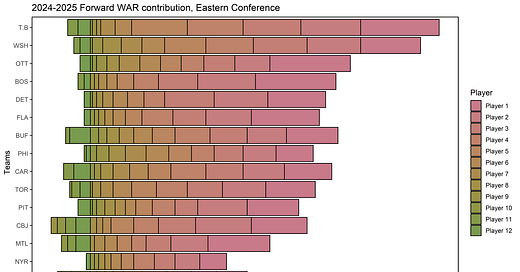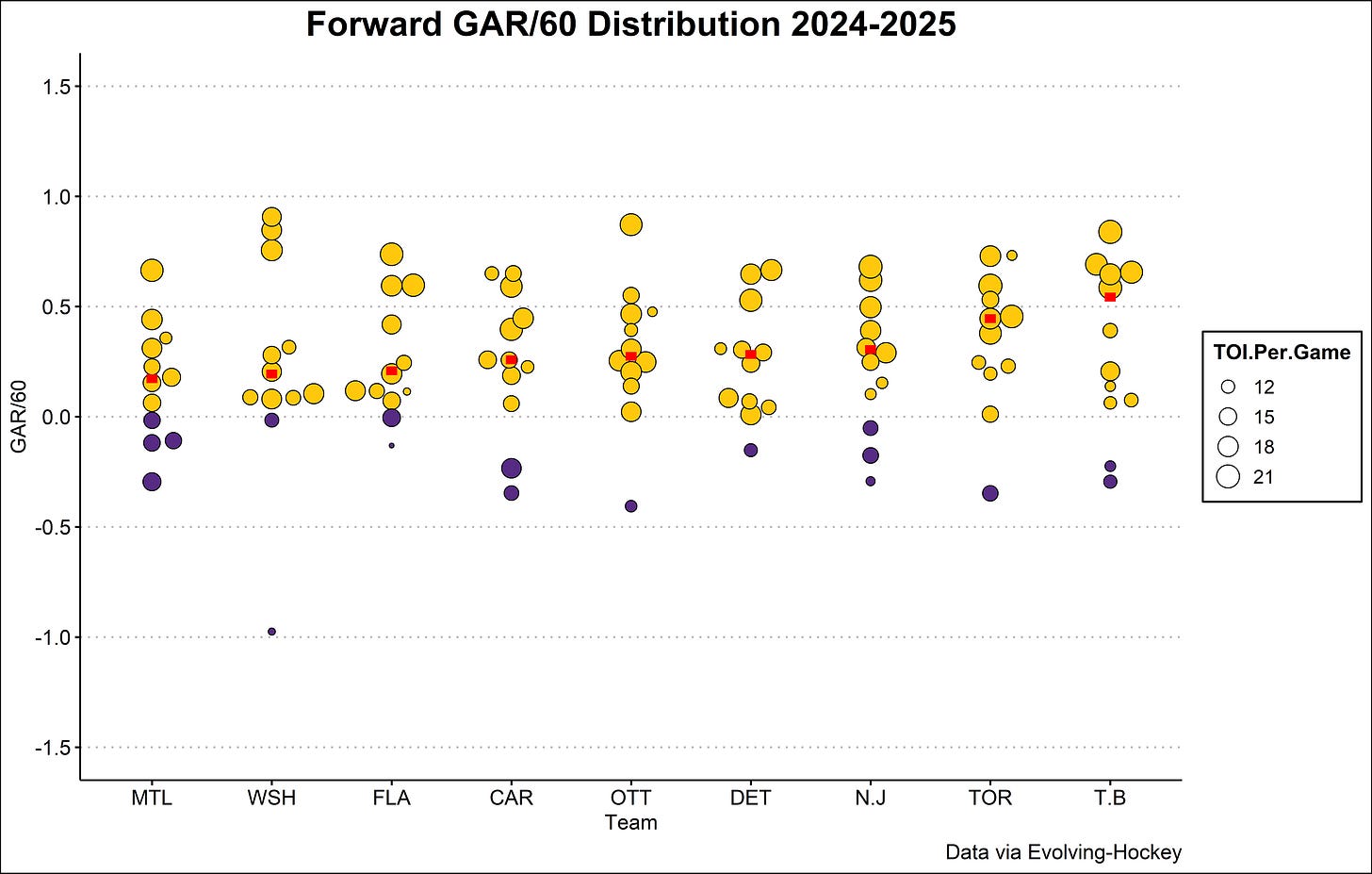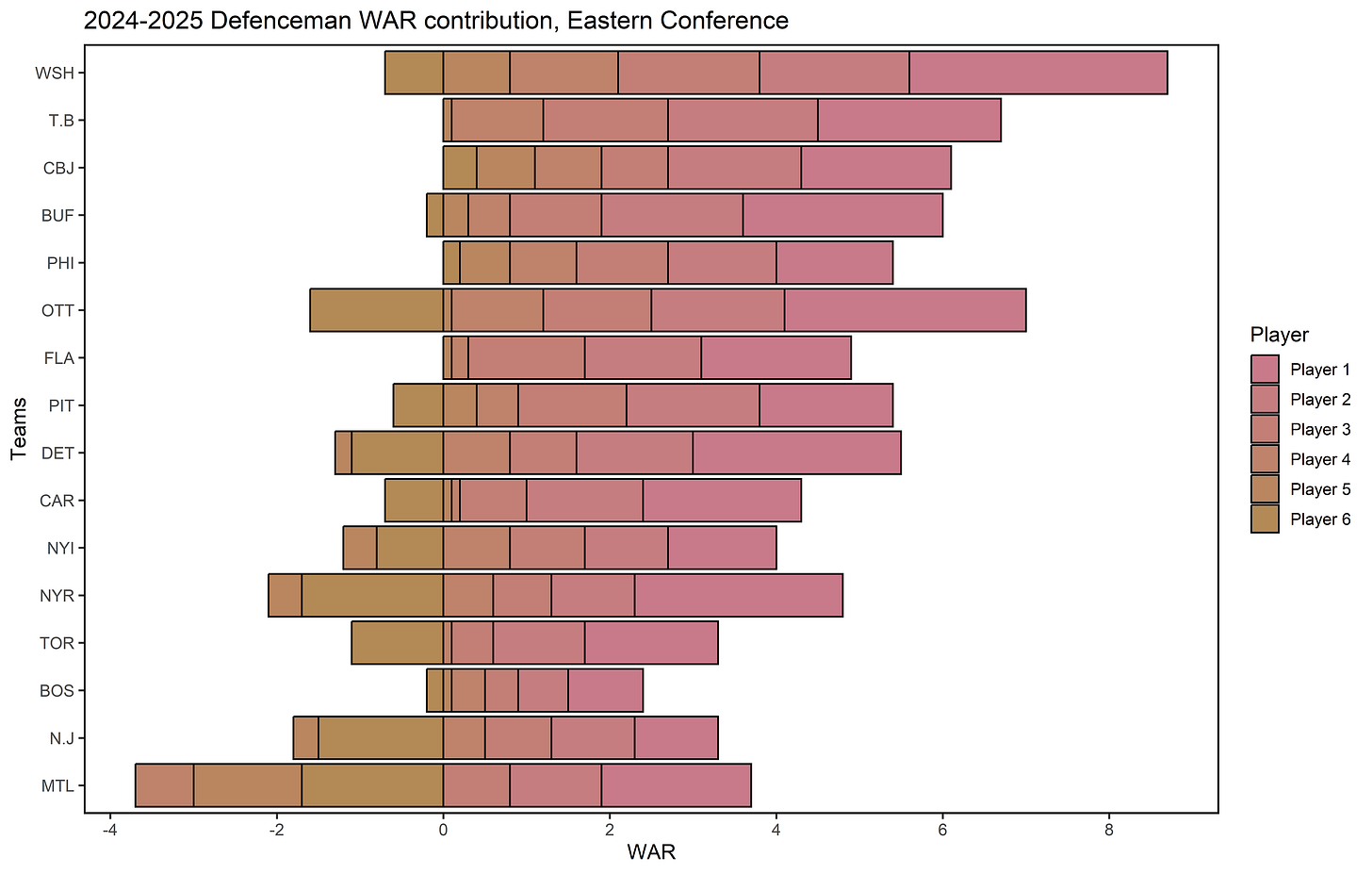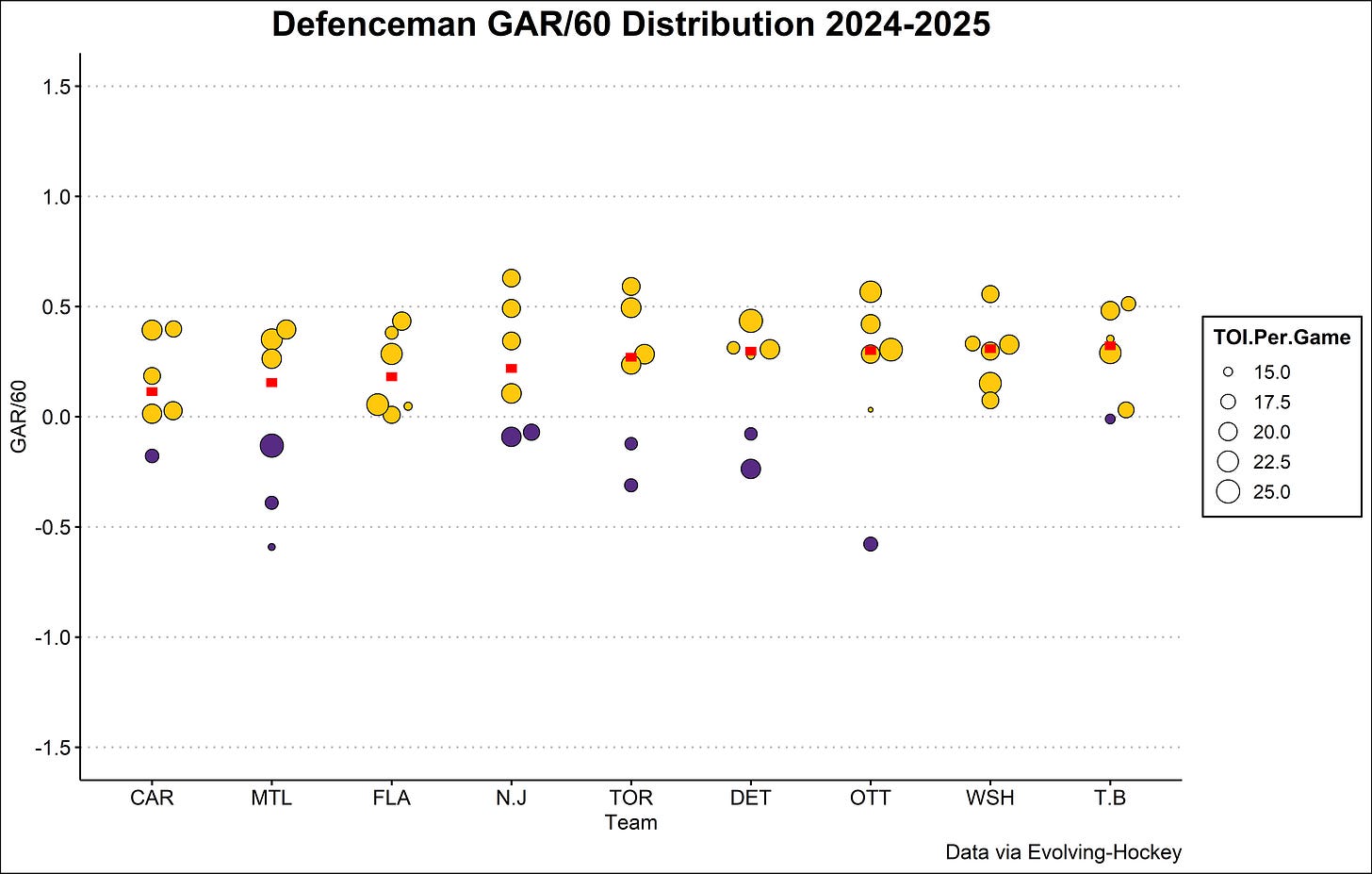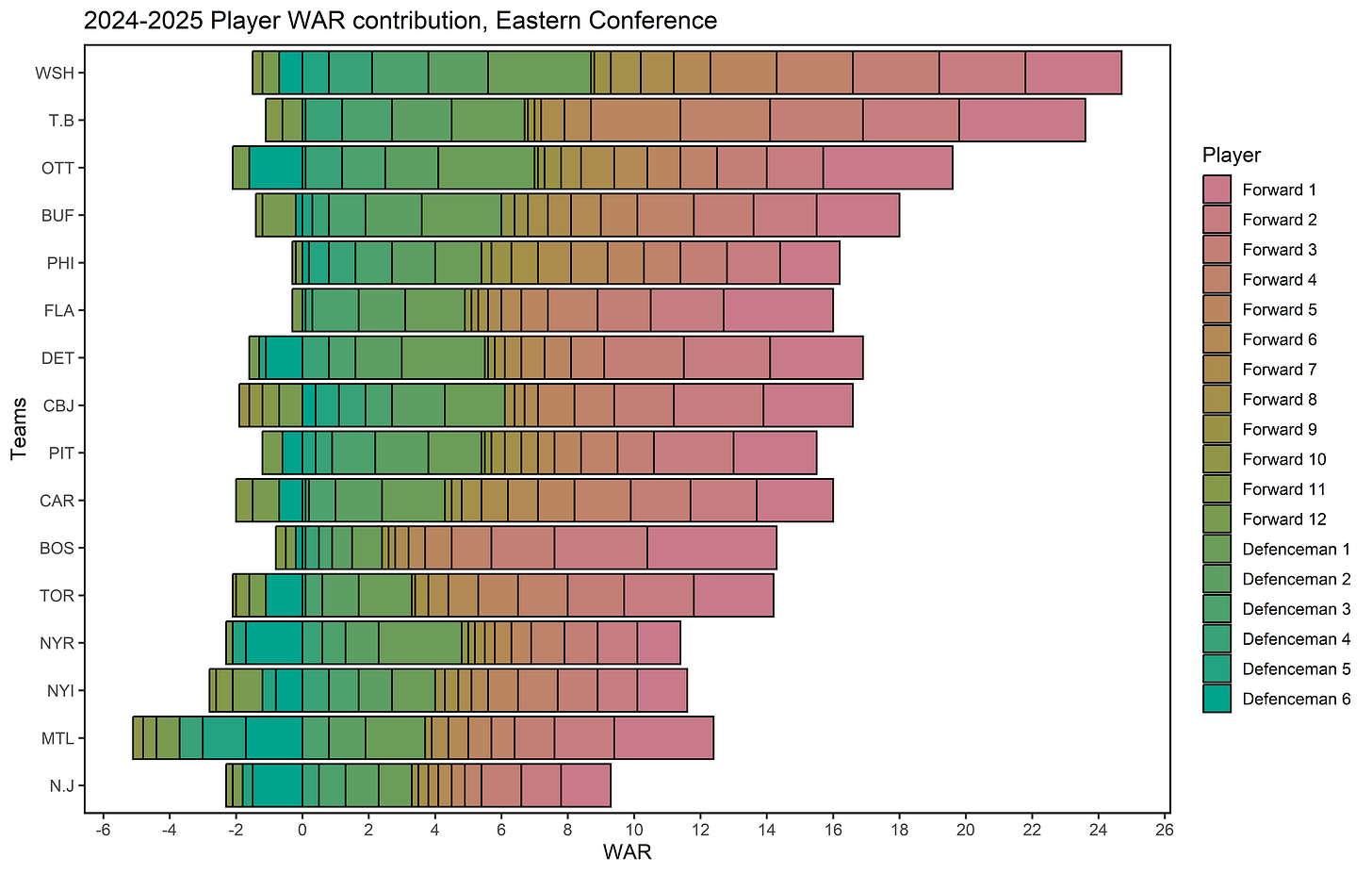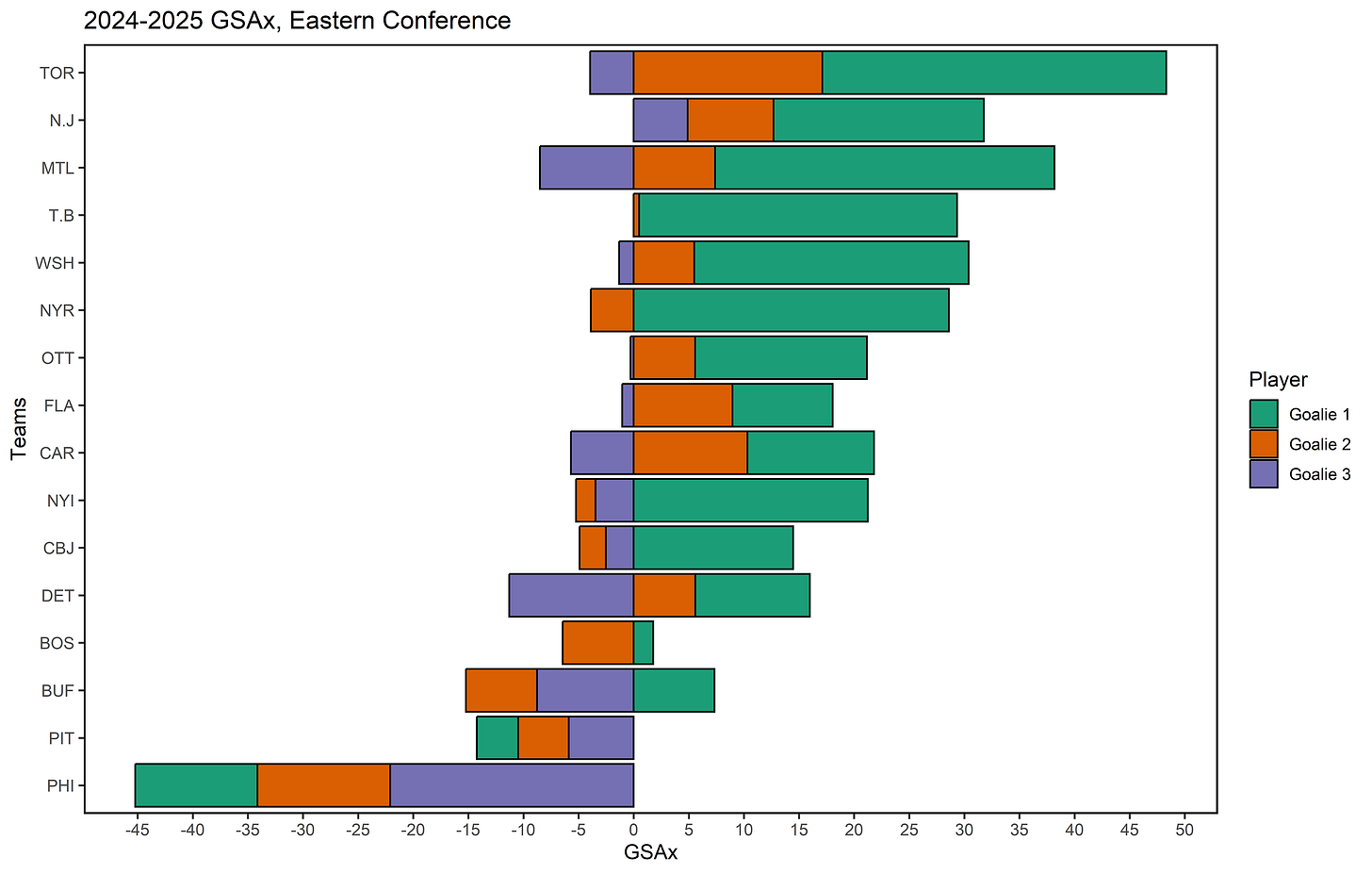Why the Detroit Red Wings Missed the Playoffs, and What They Have to Do To Make It In 2025-2026
After a disappointing end to the 2024-2025 season, the frustration in hockeytown is palpable. The discourse around the team has turned extremely critical and cynical, with particular ire directed at the pro-scouting department, off-season head-scratchers like the Walman trade, departed coach Derek Lalonde, and a muted deadline from the front office. As an avid fan I have found myself engaged in debates about what went wrong and how far away the team really is from the playoffs. What I have increasingly come to feel is that the discourse does not seem to match up with what I have seen, with too much emphasis focused on the result and not the process. I believe this has led to some rather peculiar narratives taking hold among the fanbase - for instance, that the most important thing the team can do this offseason is acquire a top-line left winger, instead of finally assembling an NHL worthy defensive core.
So, as a scientist by trade, I decided to dig into some numbers to find out whether my eyes were deceiving me or not.
Over two years ago, Max Bultman published an article in the athletic which discussed differences in the composition of playoff and non-playoff rosters: https://www.nytimes.com/athletic/4514736/2023/05/15/red-wings-stanley-cup-kraken-hurricanes/?source=user_shared_article , in which he discusses that the most glaring difference between playoff and non-playoff teams is a lack of anchors – hockey, it seems, is a weak-link sport, more then a strong-link sport. Especially for a roster like detroit, which has stars, but not superstars, making the playoffs will likely recquire the elimination of as many weak-links as possible.
But where are the weak links?
The Forwards
An immense amount of criticism has been levied against the forward core for some time now, with players like Tarasenko, JT Compher, and Jonatan Berggren suffering the most of fan’s ire. For many fans and content creators, the top-line left wing has become the most important hole in the lineup. But while some forwards on the team definitely had disappointing years, is it really the forward core that is preventing the team’s success?
If we look at the overall Wins Above Replacement (WAR) provided by the twelve forwards on the team by ice-time, we see clearly that the group in Detroit actually compares favourably with most of the eastern conference. The team’s depth scoring has certainly come under the cross-fire in recent months, but the eye-test can be deceiving, and while its true the team could use more goals, the defensive impact of many of these forwards is more then enough to make up for their lack of scoring. In the end, only one team with higher total WAR in their forward core than Detroit missed the playoffs – Boston (for reasons which will be evident soon). In addition, four teams even made the playoffs with less WAR contributions from their forwards than Detroit – Montreal even made it from the bottom of the conference (more on this later).
WAR doesn’t explain the whole story of course, so I decided to look a little closer at the top 12 forwards on Detroit compared to Eastern Conference playoff teams through Goals Above Replacement (GAR) per 60 minutes. As you can see in the bee-swarm below, Detroit once again compares pretty favourably: in fact, while it is true that there are a number of players with neutral impact, Detroit has fewer weak-links than most of the teams which made playoffs this year, and they do in fact have the horses at the top to compete. Its true that there is a drop-off after the top 3 forwards (Alex Debrincat, Dylan Larkin, and Lucas Raymond), but weighted-average GAR/60 of the group is still within the top four teams in this sample. This is another case where I think that the eye-test is severely underestimating the defensive impact of the forward core.
So it would seem that the forward core is worthy of a playoff team. But what about the defence?
Defensive Woes
I came into this piece with the idea that the team was in most desperate need of top four defensemen this off-season. The eye-test suggests that all season long there have been slotting issues – with Ben Chiarot and Albert Johansson both playing well above what can be expected of them. This has a negative effect on the entire D core. But how does that play out statistically?
Right off the bat we can see that the defense of the Red Wings fares worse against the rest of the conference than the forward group: despite heroic efforts from Moritz Seider and Simon Edvinsson, the wings defence core provides only the 9th highest cumulative WAR in the conference. However, four teams actually made the playoffs with less contributions from their defenders: Carolina, Toronto, New Jersey and Montreal. All four of these teams also had less WAR contributions from their forward group. So we’re going to dig a little deeper here to see what’s going on.
When we break it down by GAR/60, we can immediately see the weaknesses inherent in the Detroit defensive core. Despite Detroit’s weighted average GAR/60 eclipsed 5 playoff teams, Detroit has two major anchors which are dragging down the defensive core – and they aren’t the players you would expect. Most of the other playoff teams (except for Montreal), had fewer weak-links, and few weak-links got the same kind of deployment as those in Detroit. So who are our mystery players: Albert Johansson and Ben Chiarot.
You might have been expecting it to be Justin Holl and Erik Gustaffson, but the fact is that these players were so sheltered that they came off looking pretty good by comparison. As you can see comparing to the other teams in the bee-swarm, few defenders got such a sheltered deployment. If either of these players were able to eat more minutes, their numbers would certainly look worse. Fortunately for them, the coaching staff relied heavily on the top four to prevent such a scenario… and unfortunately for Ben Chiarot and to a lesser degree Albert Johansson, this led to them effectively cast adrift and drowning without a life-jacket. Few playoff teams could afford to have two top four defenders so over-deployed.
Thus, far more important than retooling the forward core is getting Moritz Seider and Simon Edvinsson partners who can handle the minutes, shifting Albert Johansson and Ben Chiarot down to the third pair at any cost. This would require two top four defenders, either through FA or trade, as I do not expect any prospect, even ASP, to be ready to jump in and take those minutes.
But I know what you’re thinking. Wait a minute. Several playoff teams had less WAR contributions from both forwards and their defence, even with Detroit’s flaws. So how did they make it when Detroit missed by 5 points? Well you would be right to ask that question. When we combine WAR for all 18 skaters, we see that Detroit has the 7th highest cumulative WAR in the conference. Yet 4 teams with less cumulative WAR made the playoffs, and several teams (Buffalo, Philadelphia) with more cumulative WAR also missed. What gives?
These anomalies can be easily explained by one more factor.
Stopping Pucks is Good, Actually
Ah goaltending. An achilles heel of the team and one that Steve Yzerman did try to address at the deadline, only for Mrazek to almost immediately suffer what appeared to be a concussion and be shut down for the season. The easiest way to look at this would be goals saved above expected (GSAx) – effectively how many goals over the course of the season did a goalie save above what could be expected of them? It might surprise you to learn that Alex Lyon and Cam Talbot performed reasonably well here… but much of their performance was given back with a disastrous 10 game stretch from Ville Husso, whose time in Detroit did not go how either the FO or the player had hoped.
When it comes to cumulative GSAx, Detroit was fifth worst in the conference, and no team below them got anywhere close to playoffs. This included both teams with higher cumulative WAR than Detroit: Philly and Buffalo both had disastrous goaltending this year. Every team that made the playoffs despite less WAR than Detroit had incredible goaltending: for some of these teams this could be expected – New Jersey for instance has invested heavily in goaltending after it repeatedly sunk them in prior seasons. This, as it happens, is also the true difference between Montreal and Detroit. It was *not* the skaters that led Montreal to their first post-season birth since the rebuild started, it was a Shesterkin like performance of ~30 goals above expected from Sam Montembeault. That is not to say that Montreal can’t reach the post-season again in 2025-2026 with some roster additions of their own, but I’m not sure they should be anticipating, let alone expecting, such a performance from Montembeault again.
Now there are some positive notes here for Detroit. Talbot was a net positive in net, and the team seems to have confidence that Mrazek can be as well. We can also anticipate that, given some defensive upgrades and a new penalty kill system, these numbers could improve. But no team is only two goalies deep, and to reach the post-season next year Detroit *will* need to find a third goalie that does not give up as much – if not more – than the top two provide.
Conclusion
To summarize, I do not believe that it is the forward core that held the Red Wings back from their first post-season birth in the Steve Yzerman era, and the forward core seems to get a lot more of the blame than what is deserved. Despite an anemic start to the season under Lalonde and a slump in march, overall, the forward core compares pretty favourably to other Eastern Conference teams. The single greatest impediments to the team’s chances of making the playoffs remain on the back-end. The lack of top end talent and depth on the back end results in Ben Chiarot and Albert Johansson being over-deployed, and if the wings go into next season without pushing both, or at least one of these players, down the lineup, they will be doing both these players – whom would be more then adequate third pairing defensemen – and the organization a major disservice, especially if the defence is ignored in order to facilitate changes to an already adequate – if not flashy – forward core. Perhaps just as important as addressing the defence – which should in itself improve goalie performance – is improving the situation in net: the wings still lack a number one goalie. In the absence of one, Talbot and Mrazek may well be an improvement, but if the Red Wings do not find a reliable third string goalie, it might not matter. These issues, however, *are* fixable with a little creativity. Whether or not Steve Yzerman has the appetite to part with futures in order to do so, rather then banking on a whole season of a new system and internal growth under Todd McLellan remains to be seen.
Data
All of the data used in this analysis was taken from Evolving-Hockey: https://evolving-hockey.com/ .
